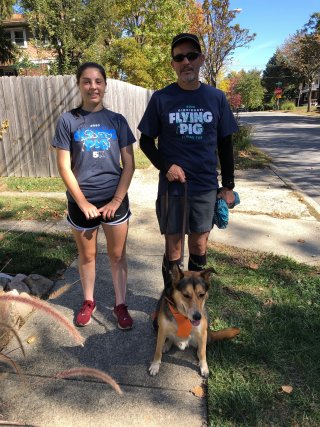Meet EPA Researcher Steve Harmon, MS

Tell us about your background.
I grew up in Akron, Ohio and received my undergraduate degree from the University of Akron. I moved to Cincinnati in 1991 for a summer job at EPA while I was a graduate student. I finished my graduate degree in geology from the University of Cincinnati. I’ve now worked at EPA for 32 years. For the first eight years, I was a contractor and worked on analytical chemistry for in-house studies dealing mostly with corrosion of lead and copper plumbing. In 1999 I was hired as a federal employee for EPA as a physical scientist studying corrosion of potable water distribution lines and premise plumbing. I used electron microscopy with energy dispersive spectroscopy, X-ray diffraction, and X-ray fluorescence spectroscopy to study the corrosion deposits that form in water distribution systems. I spent some years as a quality assurance manager and then returned to the laboratory and studying corrosion, especially lead service line scales and particulate. I am currently branch manager for drinking water quality in the Water Infrastructure Division of the EPA.
How does your science matter?
Lead is a neurotoxin that can cause permanent cognitive and behavioral impairments in children, and cardiovascular and kidney problems in adults. There is no safe concentration of lead in drinking water. My research focuses on the lead service lines that connect consumers’ houses to the water mains in the street. These service lines are often the main source for lead contamination in consumer’s tapwater. With a proper understanding of plumbosolvency (the ability of the water to dissolve lead), the utility’s background water chemistry and the composition of the lead pipe scale in the service lines, it is possible to mitigate lead exposure. This work matters as we have seen what can happen when corrosion control fails like it did in Flint, MI and elsewhere.

When did you first know you wanted to be a researcher?
I’ve known since childhood that I wanted to be a geologist. Perhaps it was from watching NOVA on PBS! I started doing research as an undergraduate and haven’t stopped yet.
What impact do you see your research having?
Hopefully I see our research helping communities identify and remove their lead service lines. And until they can do that, to successfully use corrosion control strategies to minimize lead solvency.
If you weren’t a scientist, what would you be doing?

I would probably be teaching science at a high school or community college. Or maybe I would be a wilderness guide taking people into the Boundary Waters in Northern Minnesota or Quetico Provincial Park in Canada.
Any advice for students considering a career in science?
When you take a class that interests you, talk to your instructor. Let them know that you are interested in what they study. Do this early in your undergraduate career! You might just be surprised about how much this simple act will help create bonds that can help you in your career.
What do you think the coolest scientific discovery was and why?
It’s not fair to ask just one coolest thing! But, how about the electron microscope, because it is just amazing to see the hairs and structure of a fly’s eye. Alexzander Fleming’s discovery of penicillin in 1928 was probably one of the most eventful discoveries. His discovery led to the development of modern antibiotics which have saved so many human lives and vastly decreased childhood mortality.
What do you think will be our biggest scientific challenge in the next 20/50/100 years?
I think the biggest challenge will be funding issues. There are so many things that are going to demand our attention and dollars like our aging infrastructure or mitigating the effects of climate change. These issues will compete with our needs for basic scientific research.
Editor's Note: The opinions expressed herein are those of the researcher alone. EPA does not endorse the opinions or positions expressed.
